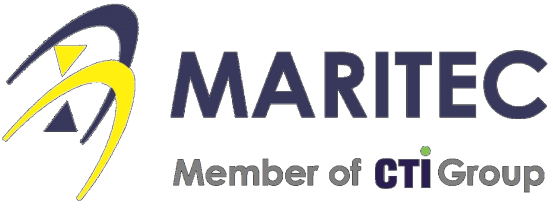
Since the last alert (
BF202207-01) dated on 05-July-2022 on Chemical Contaminants in Fuels from ARA Region (Amsterdam, Rotterdam & Antwerp), CTI Maritec has kept a close watch on the fuel quality in the region. More recently, several VLSFOs delivered in this region are still observed with the presence of chemical contaminants. These VLSFOs also indicated elevated potassium content and acid number.
Forensic analysis by Gas Chromatography and Mass Spectrometry techniques, specifically ASTM D7845 GC/MS and Solid Phase Extraction (SPE) GC/MS, on some of the samples revealed the presence of the following compound groups at abnormally high concentrations
· Fatty Acids and Monoglycerides (>1000ppm)
· Alkylresorcinols (>2000ppm)
· Phenolic compounds (>1000ppm)
It is difficult to determine a safe concentration level suitable for marine diesel engine usage or the baseline wherein machinery problems may occur. Due to the severity of the Machinery problems faced, we urge vessel operators to continue pre-emptively testing the fuels bunkered in the region by accredited test methods to detect these contaminants assessing the risk each bunker stem has on the vessel machinery.
Recommendation by CTI-Maritec
1. Obtain quality assurance and test proof from suppliers on the absence of contaminants in the intended stem prior bunker delivery (This will require testing beyond the scope of standard ASTM D7845-20 test method)
2. Plan your bunkers well in advance to keep the incoming fuel segregated and reduce the risk of comingling.
3. Ensure sampling procedure during bunkering is witnessed by both supplier and receiver and sample bottles are counter-sealed and same recorded in the Bunker Delivery Note.
4. Be aware of your bunker supply contract and the notification time limit stipulated to flag potentially problematic fuels to the supplier.
5. Look for signs of abnormally high potassium content (>110ppm) and/or high total acid number (>1.5mgkoh/g) and pre-emptively analyze the bunker fuel by Gas Chromatography and Mass Spectrometry (GC-MS) that can reveal the presence of undesirable compounds in the fuel thus safeguarding vessel operations.
6.Where chemical compounds have been detected, gather sufficient evidence to support further investigation. Proceed to conduct joint analysis in agreement with the supplier by an independent laboratory capable of detecting the compounds to determine the compliance with ISO8217 clause 5 – General Requirements.
This document however does not reflect on the overall quality of fuel being supplied at ARA region.
The opinions expressed herein are the author's and not necessarily those of The Xinde Marine News.
Please Contact Us at:
media@xindemarine.com


 Ningbo Containerized Freight Index Weekly Commentar
Ningbo Containerized Freight Index Weekly Commentar  Ningbo Containerized Freight Index Weekly Commentar
Ningbo Containerized Freight Index Weekly Commentar  Ningbo Containerized Freight Index Weekly Commentar
Ningbo Containerized Freight Index Weekly Commentar  BIMCO Shipping Number of the Week: Bulker newbuildi
BIMCO Shipping Number of the Week: Bulker newbuildi  Ningbo Containerized Freight Index Weekly Commentar
Ningbo Containerized Freight Index Weekly Commentar  Ningbo Containerized Freight Index Weekly Commentar
Ningbo Containerized Freight Index Weekly Commentar